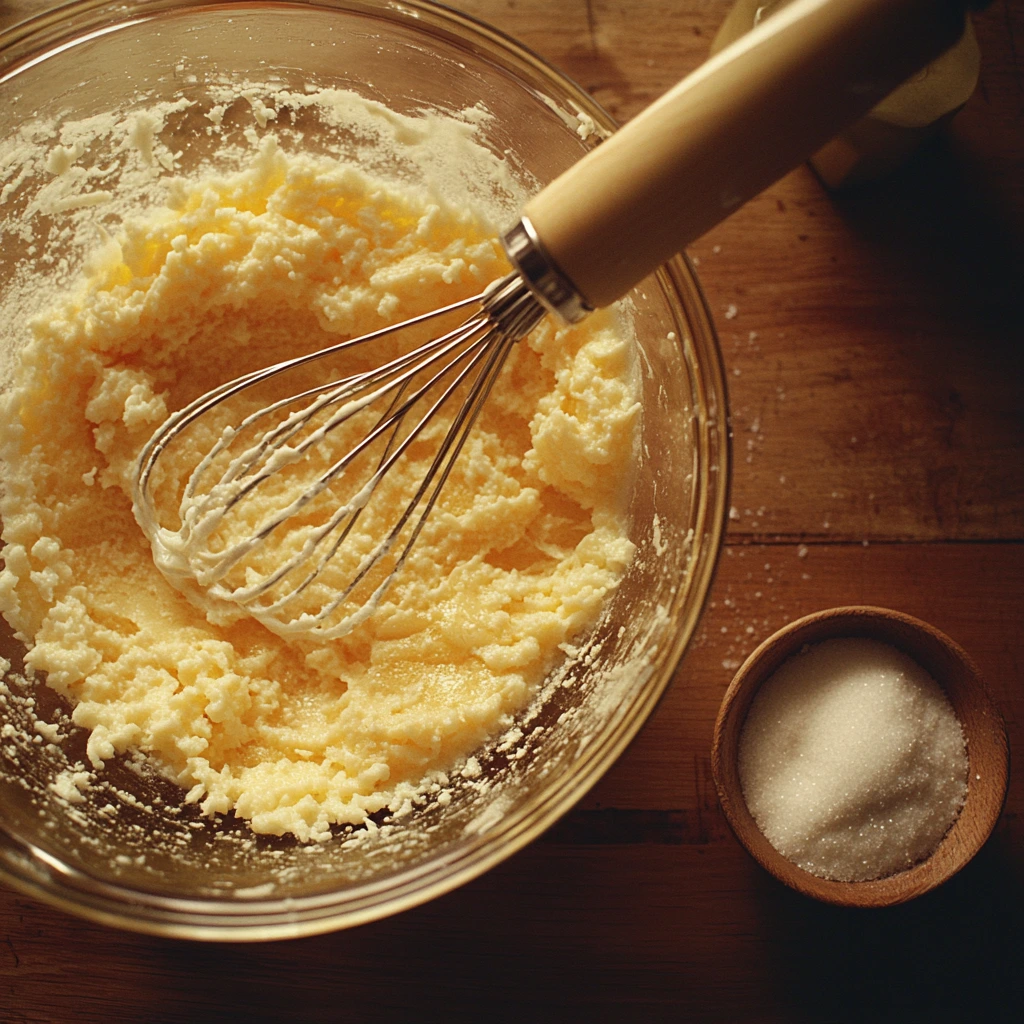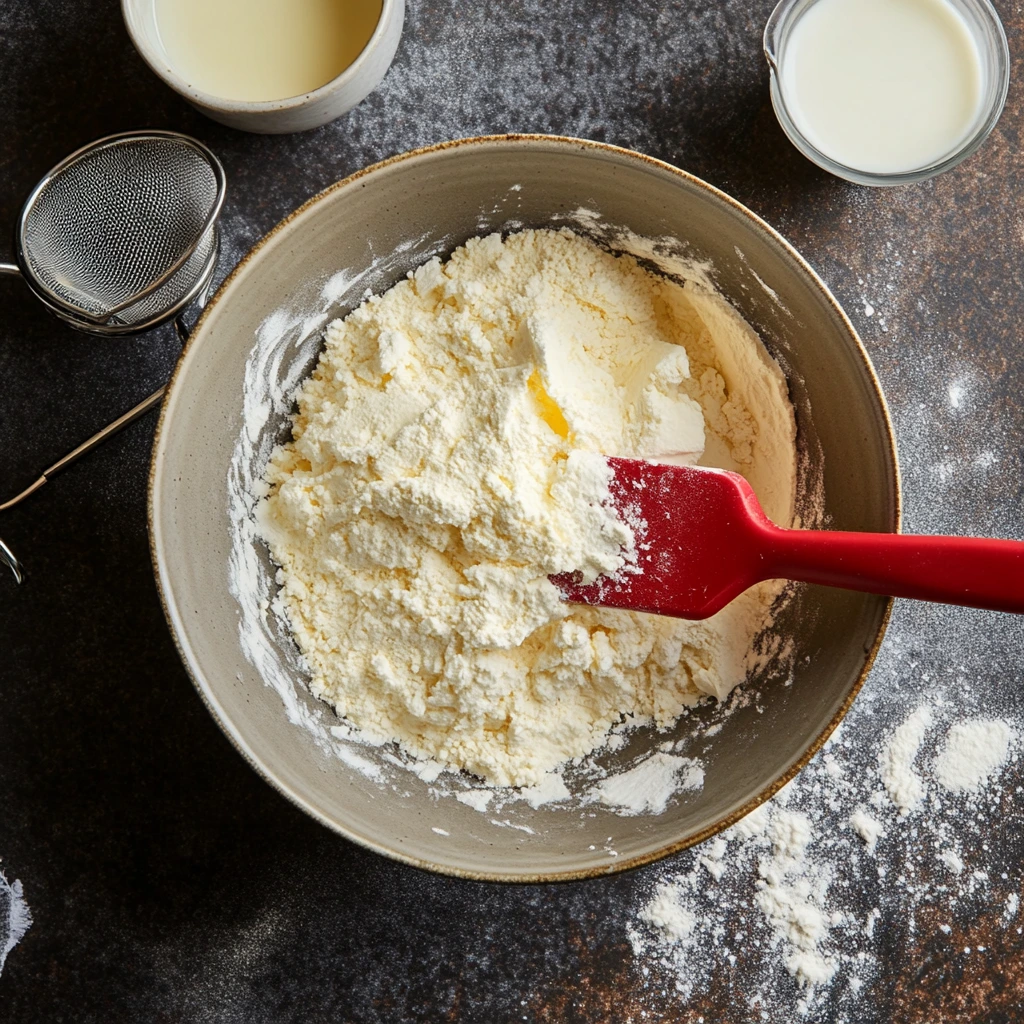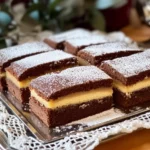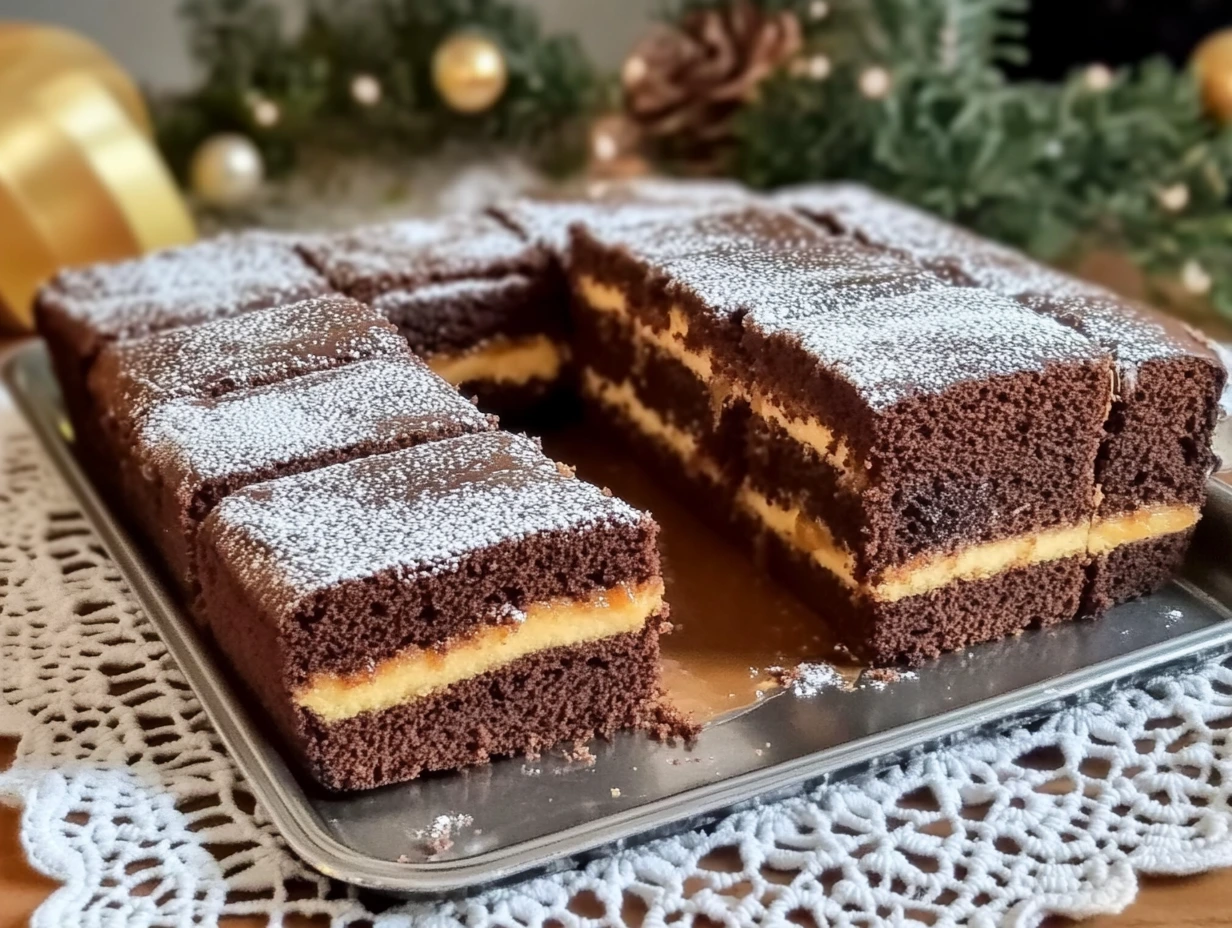If you’ve ever bitten into a slice of cake so soft it felt like eating a cloud, you already know the kind of magic we’re going for here. This Softest Cake Recipe is hands-down one of my go-to bakes when I need something simple yet utterly irresistible. Whether it’s for a birthday, a midweek treat, or that “just because” dessert moment, this sponge cake hits all the right notes: light, airy, and melt-in-your-mouth perfection.
I remember the first time I tried to recreate this style of bakery sponge at home—I followed a recipe I found online, whipped up the eggs, folded everything carefully, baked it… and ended up with something more like a pancake than a cake. Sound familiar? That’s because a soft, perfectly risen cake isn’t just about ingredients—it’s all about the technique.
So today, I’m walking you through my tried-and-true method for the softest, fluffiest cake you’ll ever make. And the best part? You don’t need any fancy tools or ingredients—just a little patience and a few bakery secrets that make all the difference.
Let’s get started with the most important part: whipping the eggs. Seriously, if there’s one step you don’t want to rush, it’s this one.
Step 1: Whip the Eggs & Sugar to Fluffy Perfection
To kick things off, you’ll need four large eggs at room temperature. This part is crucial—cold eggs just won’t whip the same way. If you forgot to take them out in advance (guilty here, more than once), just pop them in a bowl of warm water for about 5 minutes. That’ll bring them to room temp in a pinch.
Now, grab your hand or stand mixer and beat those eggs together with 1 cup of granulated sugar. Start on medium and gradually work your way up to high speed. You’ll want to keep this going for a solid 8–10 minutes. Yes, it’s a bit of an arm workout if you’re using a hand mixer, but it’s worth every second.
You’ll know you’re done when the mixture becomes pale, thick, and triples in volume. Do the ribbon test: Lift your beater and let the batter fall—if it forms ribbons that sit on the surface for a couple of seconds before disappearing, you nailed it.
This whipped egg and sugar mixture is the backbone of our cake’s incredible texture. Think of it like blowing up a balloon—you’re trapping air, and that air is what gives the cake its dreamy softness later on.

Step 2: Gentle Folding – The Make-or-Break Moment
Here’s where most cakes lose their lift—overmixing. So, go slowly, and be gentle.
In a separate bowl, sift together 2 cups of cake flour and 2 teaspoons of baking powder. The sifting might seem like an extra step, but it helps keep the batter lump-free and light. Now, using a spatula (not a mixer!), fold the flour mixture into your whipped eggs in three additions. Alternate that with 1 cup of room-temperature whole milk, also added in thirds.
The key here? Fold, don’t stir. Use a light hand and a swooping motion from the bottom of the bowl to the top. This helps incorporate everything without deflating all that precious air you just whipped in.
Once the flour and milk are just about combined, drizzle in ½ cup of melted (and cooled) unsalted butter and 1 teaspoon of vanilla extract. If you’re feeling adventurous, go ahead and add the optional zest of one lemon or a splash of rum or almond extract here. I love how just a bit of lemon zest can make the whole cake feel fresh and bright.
Fold everything in gently, just until you can’t see streaks of butter anymore. Don’t keep mixing—it’s okay if it’s not perfectly uniform. The batter should be smooth but still airy and light.

Step 3: Bake Low and Slow
One of the most common mistakes in baking soft cakes is cranking the heat up too high. High heat can make your cake rise too fast and then collapse—or dry out the outside before the inside is cooked. For this recipe, low and slow is the name of the game.
Start by preheating your oven to 325°F (160°C). This temperature lets the cake bake evenly and keeps the texture soft all the way through. Grease an 8-inch round cake pan (I recommend using one with tall sides if you have it), and line the bottom with parchment paper. This makes removing the cake from the pan super easy later—no sticking, no stress.
Pour your batter into the prepared pan and use a spatula to gently smooth the top. Don’t tap the pan or try to level it too aggressively; you don’t want to knock out any of that air you worked so hard to whip in.
Bake the cake in the center of the oven for 40–45 minutes. The exact time will depend on your oven, so start checking around the 40-minute mark. The top should be a light golden brown, and the center should feel springy to the touch.
Here’s the trick that really makes a difference: once the cake is done, take it out of the oven and invert the pan immediately onto a cooling rack. Yep—upside down. This might seem a little strange if you haven’t done it before, but it’s a tried-and-true bakery technique to prevent the delicate sponge from collapsing as it cools. Gravity helps keep the structure intact.
Let it cool completely before removing from the pan. Be patient—it’s worth it.
Step 4: How to Serve It Just Right
Now for the fun part—serving this beauty. You’ll notice right away how light the crumb is. It’s almost like slicing through foam, in the best way possible. Use a serrated knife to cut it, which keeps those soft layers from squishing down.
There are endless ways to enjoy this cake:
-
Dust with powdered sugar for a clean, classic look.
-
Top with whipped cream and fresh berries if you want something refreshing and summery.
-
Layer with jam or fruit compote for a tea-time twist.
-
Frost it with buttercream or mascarpone for a more decadent dessert.
And if you’re making this for a special occasion, it also works beautifully as a base for layered celebration cakes. It’s sturdy enough to hold fillings but soft enough to still feel indulgent.
Personally, I love having a slice with a hot cup of tea in the afternoon. It’s just the kind of simple pleasure that makes a regular day feel a little bit special.
Bonus Tips for the Softest Cake Every Time
-
Use cake flour only. All-purpose flour is too heavy and will weigh the cake down. Cake flour is finer and has less protein, which gives the sponge its tender crumb.
-
Room temperature ingredients matter. Cold milk or eggs can cause the batter to seize or split. Take the chill off everything before you start.
-
Don’t overmix. I know I said it already, but it bears repeating—fold gently and only until just combined.
-
Cool upside down. This helps preserve the cake’s structure and keeps it from sinking in the middle.
-
Make it ahead. This cake stores well. Wrap it in plastic and let it sit at room temperature overnight—the flavor and texture actually improve slightly the next day.
FREQUENTLY ASKED QUESTIONS
1. Can I use all-purpose flour instead of cake flour?
Technically, yes—but it will change the texture. All-purpose flour has a higher protein content, which makes for a denser, less tender crumb. If you’re in a pinch, you can make a cake flour substitute by replacing 2 tablespoons of flour per cup with cornstarch, then sifting well.
2. Why did my cake sink in the middle?
This usually happens when the cake is underbaked or the batter was overmixed. Make sure to bake until the center springs back when lightly touched, and don’t open the oven door too early. Also, be sure to follow the folding instructions carefully to keep the batter airy.
3. Can I double this recipe for a layered cake?
Absolutely! You can double the ingredients and divide the batter into two 8-inch pans. Just be sure to keep an eye on baking time—it may need a few extra minutes depending on your oven and pan size.
4. What’s the best way to store this cake?
Once cooled, wrap the cake tightly in plastic wrap or place it in an airtight container. It will stay fresh at room temperature for 2–3 days. For longer storage, refrigerate for up to 5 days or freeze for up to 2 months.
5. Can I make cupcakes with this batter?
You sure can! Just fill cupcake liners about ¾ full and bake at 325°F for 18–22 minutes. Keep an eye on them—they should be lightly golden and springy to the touch.
6. Do I have to invert the cake while it cools?
It’s highly recommended, especially for this style of cake. Inverting helps maintain the structure and height. If your pan doesn’t allow for safe inverting, cool the cake upright, but expect a slightly less airy result.
7. Is this cake sweet enough to enjoy without frosting?
Yes, it’s lightly sweet and flavorful on its own. A dusting of powdered sugar is all you need for a simple treat, but it also pairs beautifully with whipped cream, fruit, or light glazes.
FINAL THOUGHTS: A CAKE YOU’LL COME BACK TO AGAIN AND AGAIN
There’s something truly special about a cake that’s both simple and stunning. This soft sponge is that kind of recipe—the one you bookmark, print out, and keep tucked in your kitchen drawer because it never lets you down. It’s the cake that brings people back for seconds, the one that always gets asked about, and the one you’ll find yourself making “just because.”
Once you’ve mastered the technique, the possibilities are endless. Keep it plain for tea time, dress it up for celebrations, or slice and fill it for layered creations. No matter how you serve it, it’s bound to become a favorite.
So go ahead—give it a try, and don’t be afraid to make it your own. I’d love to hear how it turns out for you! Leave a comment, share your favorite topping or twist, and let’s keep the cake conversation going.
Happy baking, and here’s to the softest slice of cake you’ve ever had.
Print
SOFTEST CAKE RECIPE
- Total Time: 1 hour
Description
A heavenly-soft cake with a cloud-like texture that melts in your mouth. This sponge is perfect for layering, decorating, or enjoying on its own with a sprinkle of sugar. The secret? Whipping eggs to perfection and gentle folding—bakery secrets revealed!
Ingredients
For the Cake:
- 4 large eggs, room temperature (essential for fluffiness)
- 1 cup (200g) granulated sugar
- 1 cup (240ml) whole milk, room temperature
- ½ cup (115g) unsalted butter, melted & cooled
- 2 cups (250g) cake flour (cake flour is a must!)
- 2 tsp baking powder
- 1 tsp pure vanilla extract
Optional Enhancements:
- Zest of 1 lemon (adds brightness)
- 1 tbsp rum or almond extract (for rich depth)
Instructions
1️⃣ Whip the Eggs & Sugar:
In a large bowl, beat the eggs and sugar with a hand or stand mixer for 8–10 minutes on high speed until the mixture becomes pale, thick, and triples in volume.
Test: The batter should fall in ribbons and hold its shape for about 3 seconds when lifted.
Pro Tip: If your eggs are cold, soak them in warm water for 5 minutes to bring to room temp quickly.
2️⃣ Fold in Dry & Wet Ingredients Gently:
Sift together the cake flour and baking powder in a separate bowl.
In three batches, alternately fold in the flour mixture and the milk using a spatula. Be gentle to avoid deflating the airy batter.
Drizzle in the melted butter and vanilla (plus zest/extracts if using) and fold just until incorporated.
Texture Secret: Less is more—minimize folds to keep the batter light and fluffy.
3️⃣ Bake Low & Slow:
Preheat oven to 325°F (160°C). Grease an 8-inch round cake pan and line the bottom with parchment paper.
Pour in the batter and smooth the top.
Bake for 40–45 minutes until golden and springy to the touch.
Important: Invert the pan and cool upside down on a rack to prevent collapse.
4️⃣ Serve & Enjoy:
Dust with powdered sugar or top with whipped cream and fresh berries.
Use a serrated knife for clean slices that preserve the delicate crumb.
Perfect for tea time, birthdays, or anytime you crave a soft, elegant cake.
Notes
- Use Cake Flour Only:
Cake flour has lower protein content than all-purpose flour, giving your cake a much finer, softer crumb. Don’t substitute unless you make your own (replace 2 tbsp per cup with cornstarch). - Room Temperature Ingredients Are Key:
Room temp eggs and milk blend better and hold more air. This ensures maximum volume when whipping and better texture. - Whip Until Ribbon Stage:
This is crucial for structure—under-whipping leads to dense cake, while over-whipping can cause deflation.
- Prep Time: 15 minutes
- Cook Time: 45 minutes
Nutrition
- Serving Size: 8




